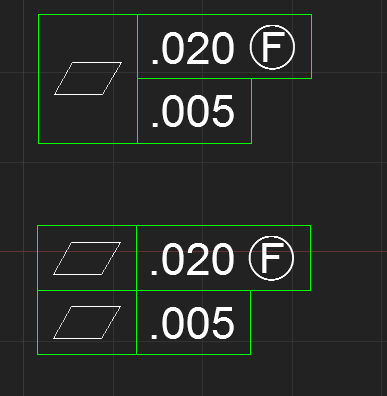Whats the difference in the feature control frame of a composite tolerance vs multiple single segment tolerances? I got this on a drawing and these 2 flatness tolerances are considered Datum A. To me the bottom example feels like it was a mistake by the drafter as most of the drawings that came in at the same time by the same people looked like the above example.



![[neutral] [neutral] [neutral]](/data/assets/smilies/neutral.gif)